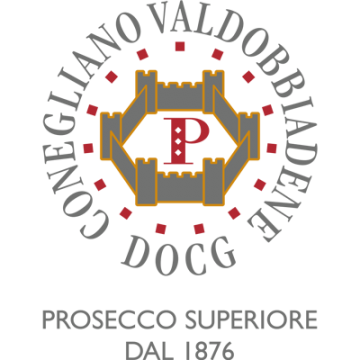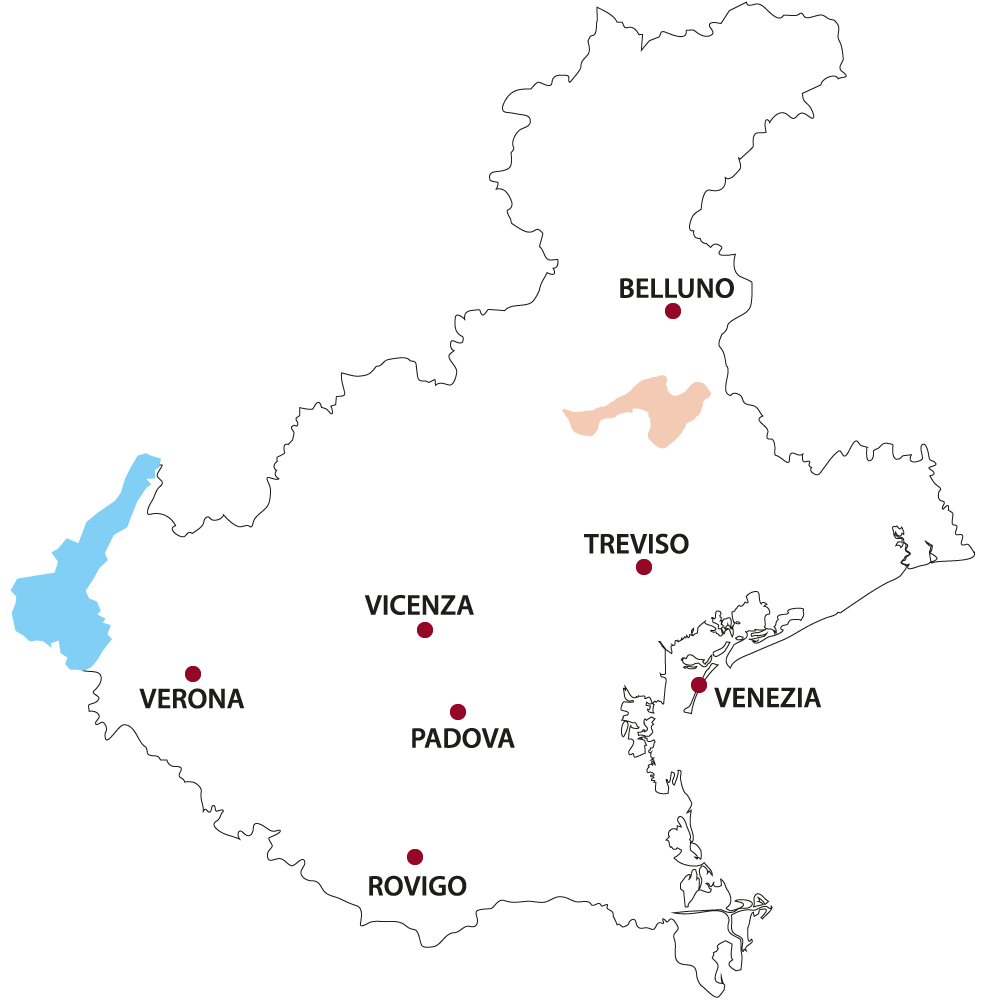

Zona di produzione
The production area extends into the hilly regions of the province of Treviso between the towns of Conegliano and Valdobbiadene. A chain of hills, running in the east-west direction, which climb all the way from the plains to the Alps, equally distant from the Dolomites – which protect them to the north – and from the Adriatic, that positively influences the climate and the nature of the landscape. The production area comprises the territory of 15 municipalities (Conegliano, Susegana, San Vendemiano, Colle Umberto, Vittorio Veneto, Cison di Valmarino, S. Pietro di Feletto, Refrontolo, Pieve di Soligo, Farra di Soligo, Miane, Vidor, Follina, Tarzo and Valdobbiadene) and extends over a vast area entirely cultivated with vineyards that cohabit with wooded zones on an agricultural land of about 20.000 hectares. Vines are cultivated only on the sunniest side of the hills, at an altitude of between 50 and 500 meters above sea level, while the north face is often covered with woods. There are currently more than 6,500 hectares of vineyards enrolled, that are worked by over 3,000 producers: 107 of these hectares belong to the sub-area of the Superiore di Cartizze which yields a yearly production of over a million bottles. The subzone of Cartizze lies between the steepest hills of San Pietro di Barbozza, Santo Stefano and Saccol, in the municipality of Valdobbiadene. It produces a genuine cru, born from the perfect combination of a sweet microclimate and very varied terrain, with moraines, sandstones and clays; that allow a rapid drainage from the rain and, at the same time, a constant water reserve so that the vines grow in a balanced way. In 2009 the Conegliano Valdobbiadene Prosecco obtained recognition as D.O.C.G. Thanks to this step, Conegliano Valdobbiadene, forty years after being recognised by the D.O.C., enters by its own right at the summit of the Italian quality wines ranking. The history of the denomination remains unchanged as well as the area of production but the producer’s opportunity to enhance it is broadened. The historical area of Conegliano Valdobbiadene has been granted the possibility to have the name of the originating municipality of the grapes written on its labels to highlight all those locations that throughout time have developed a particular expertise and merit. In this case the place name is preceded by the traditional term “Rive”, which refers to “the vineyards on the hill”.
Caratteristiche e tipologie vino
The “Conegliano Valdobbiadene” D.O.C.G. is born from precise rules that guarantee its uniqueness and authenticity, and from a tradition that, whilst adapting itself to the changes that have taken place, has preserved over time a precise and unmistakable identity. Tranquillo, Frizzante, or Spumante - that with the introduction of the D.O.C.G. is called Conegliano Valdobbiadene Prosecco Superiore D.O.C.G. - can be recognised for its light straw-yellow colour, medium body, and unique floral and fruity fragrance. The Prosecco Superiore fully expresses its agile, and at the same time, energetic character and is produced mainly in three versions that are characterized by the sugar residue: the Brut, the Extra Dry and Dry. Brut, the driest (between 0 and 12 g/l), is the most modern version and has reaped international success. The Brut is the more modern version and it has had a great international success. It is characterised by richer scents of hints citrus and vegetable hints, which are combined with a pleasant note of bread crust together with a beautiful and lively gustative energy. The fine ‘perlage’ ensures the persistence of flavour and the cleansing of the palate, making a sparkling wine par excellence for the table. C H A R A C T E R I S T I C S A N D T Y P E S O F W I N E S The Extra-Dry, the “classic” version (from 12 to 17 g/l) combines the aromatic varieties with the pungency enhanced by the bubbles. The colour is brilliant straw yellow enlivened by the perlage. The aroma is fresh and rich in flavours of fruit (apple and pear), with citrus hints that fade to floral. In the mouth the wine is mellow and at the same time dry, thanks to a very pronounced acidity. The Dry (between 17 and 32 g/l) is the less known version that exalts the fruity and floral notes. Cartizze is traditionally produced in this type. The Valdobbiadene Superiore di Cartizze has a greater intensity, which manifests itself in its colour and with its complexity of inviting and extended aromas from apple to pear, from apricot to citrus, to rose, with a pleasant glacé almond aftertaste. The Frizzante is the simplest and most immediate: conceived to attract young people and the less experienced consumer. The version with refermentation in the bottle is the true ambassador of the vintners tradition; an essential wine, dry, light, and digestible. In the most widespread method of fermentation, in autoclave, the Frizzante harmonises the fragrance of the varied aromas of the grapes with a delicate tweaking of carbon dioxide, in a union which gives great freshness. Less well known is the Tranquillo version. It is obtained from the most dense and less productive grapes and from well-ripened grapes. Vinification may require a brief cold maceration of the skins of the grapes in order to enrich the wine’s aromas and texture. The colour is a delicate straw-like yellow, with aromas reminiscent of apple, pear, almond and Millefiori honey (of a thousand flowers). The structure is smooth and persistent, sometimes with a pleasantly bitterish aftertaste that makes it more articulate and complex. Although not a wine for aging, it can still be appreciated into its second year of life.
Grapes
-
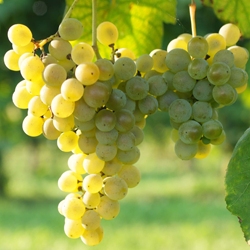
GLERA
-
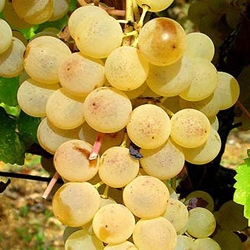
VERDISO
-
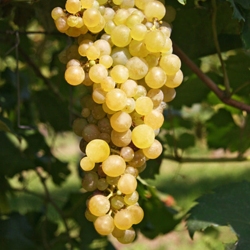
PERERA
-
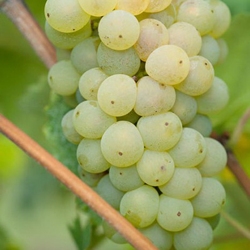
BIANCHETTA
-
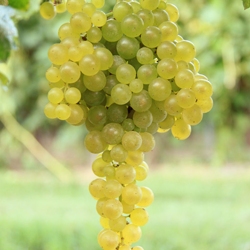
GLERA LUNGA
The Glera has been present in the hills between Conegliano and Valdobbiadene for over two centuries. Since 1876, the year of the foundation in Conegliano of the Scuola di Viticoltura ed Enologia (School of Viticulture and Oenology), and since 1923 when the “Stazione Sperimentale per Viticultura” (Experimental Station for Viticulture) was founded, studies on Prosecco have received considerable impetus by promoting its dissemination throughout the area. The origin of this vine is mysterious; for some it was even known at the time of the Roman Empire under the name Pucino, from which a wine particularly appreciated by the Empress Livia Augusta was obtained. What is certain is that for more than two centuries this vine has found the ideal habitat for cultivation in the hills of Conegliano-Valdobbiadene, where diverse biotypes have spread of which one is still cultivated today, the work of a selection made in the second half of the 19th century by Count Balbi Valier: Prosecco Balbi. From this selection, the first we know about, a great body of work has followed from the “Istituto Sperimentale per la Viticoltura” (Experimental Institute for Viticulture – a branch of the Stazione Sperimentale). This was all aimed at preserving the typicality of a product that has to adapt itself to the diverse conditions that are present in the hills of Conegliano-Valdobbiadene. The Glera vine is rustic and vigorous, with hazelnut coloured branches and rather big, long, winged bunches with sparse berries of a beautiful golden yellow, immersed in the brilliant green of the large leaves. The Glera is the vine that guarantees the basic structure of Conegliano Valdobbiadene wine, but Verdiso, Perera and Bianchetta, vines considered as less useable, may in some vintages and in some areas, be included to a maximum of 15% in the production of the D.O.C.G., to contribute with their specificities to maintain the organoleptic balance of the wine. Verdiso has been cultivated in the Conegliano area since 1700; in the 19th century it was already very widespread, surpassing production of every other grape in the area. Today it is used in the vinification of Prosecco to increase its acidity and pungency, and to balance the acid component in hot years. Perera, a variety cited as already being cultivated in the Province of Treviso in the 19th century, is used in small percentages in the vinification, especially in the area of Valdobbiadene, to increase its fragrance and aroma. The name is perhaps due to the particular taste (precisely pear-like) of the pulp or, more probably, because the berry is similar in form to an upside-down pear. Bianchetta, cited since 1500 and by some authors considered native to the Treviso area, is used to “civilise” the wine especially in cold vintages since it matures earlier: this is why it is often cultivated in higher and more challenging areas, together with Verdiso. 74 Conegliano Valdobbiadene D.O.C.G
White Wines
CONEGLIANO VALDOBBIADENE PROSECCO SUPERIORE D.O.C.G.
Colour: giallo paglierino brillante;
Bouquet: nella versione Brut profumi più ricchi di sentori di agrumi e di note vegetali, che si accompagnano con una piacevole nota floreale. Nella versione Extra Dry profumi di frutta intensi, mela, pera, con un sentore di agrumi che sfumano nel floreale. La versione Dry esalta il fruttato floreale;
Taste: caratteristico, di corpo, secco o amabile o dolce, gradevolmente fruttato;
Alcoholic Strength minimum total volume: 11% vol.
Accompaniments: ottimo anche tutto pasto, il Brut va servito a 6°-8° C su antipasti di pesce e verdure anche elaborati, primi con frutti di mare e piatti di pesce al forno. L’Extra Dry è ideale su minestre di legumi e frutti di mare, paste con delicati sughi di carne, formaggi freschi e carni bianche, soprattutto pollame;
Note particolari: compare anche nelle versioni millesimato e con la specificazione “Rive” accompagnata dal nome del comune o della frazione del vigneto.
VALDOBBIADENE SUPERIORE DI CARTIZZE D.O.C.G.
Colour: more or less intense straw-like yellow
Bouquet: invitante ed ampio, dalla mela alla pera, dall’albicocca agli agrumi, alla rosa, con una gradevole nota di mandorle glassate al retrogusto;
Taste: gradevole, amarognolo, amabile e fruttato. Piacevolmente rotondo grazie ad una accennata dolcezza, ma la sottile fragranza del perlage garantisce l’armonia delle sensazioni e contribuisce a sostenere la persistenza dell’aroma;
Alcoholic Strength minimum total volume: 11,00%
Serving Temperature: va servito a 6-8 C.;
Accompaniments: dolci della tradizione, dalla pasta frolla alle crostate di frutta, alle millefoglie alla crema e alle focacce, piatti salati che abbiano una componente piccante.
Note particolari: è prodotto quasi esclusivamente nella versione Dry (residuo zuccherino 17-32 g/l).
CONEGLIANO VALDOBBIADENE PROSECCO FRIZZANTE D.O.C.G.
Colour: giallo paglierino brillante;
Bouquet: sentori floreali e fruttati con un prevalere di mela acerba e limone;
Taste: fruttato, secco o amabile, frizzante;
Alcoholic Strength minimum total volume: 10,50%
Serving Temperature: va servito a 8° C.
Accompaniments: ideale come aperitivo, con antipasti e primi non elaborati.
CONEGLIANO VALDOBBIADENE PROSECCO TRANQUILLO D.O.C.G.
Colour: delicate straw-like yellow
Bouquet: mela, pera, mandorla e miele di mille fiori;
Taste: soave e persistente, con un retrogusto talvolta gradevolmente amarognolo che lo rende più articolato e complesso;
Alcoholic Strength minimum total volume: 10,50%
Serving Temperature: va bevuto a 8-10° C.
Accompaniments: antipasti delicati di mare e di terra, ed in abbinamento con i bocconcini marinati della tradizione veneta.
